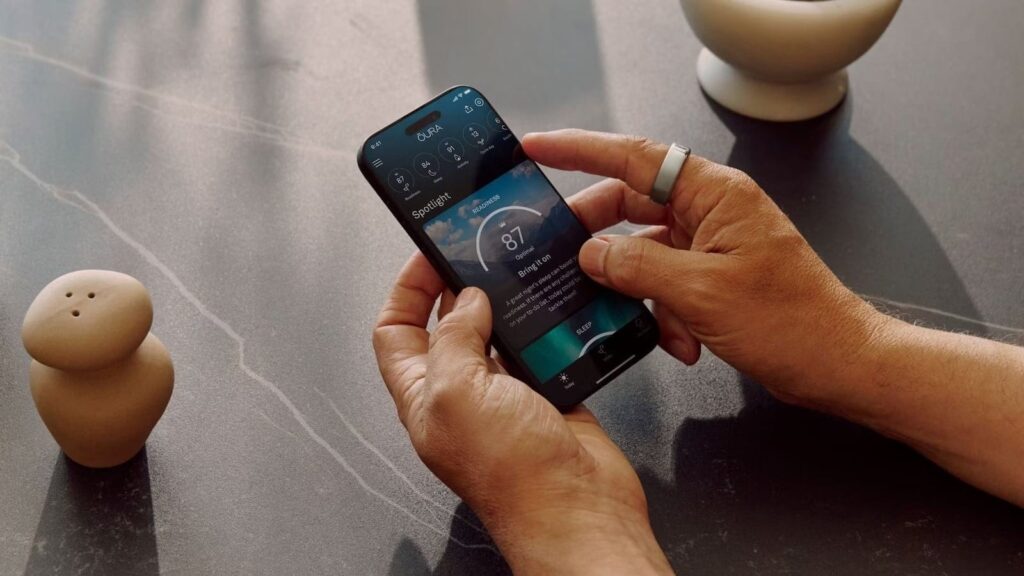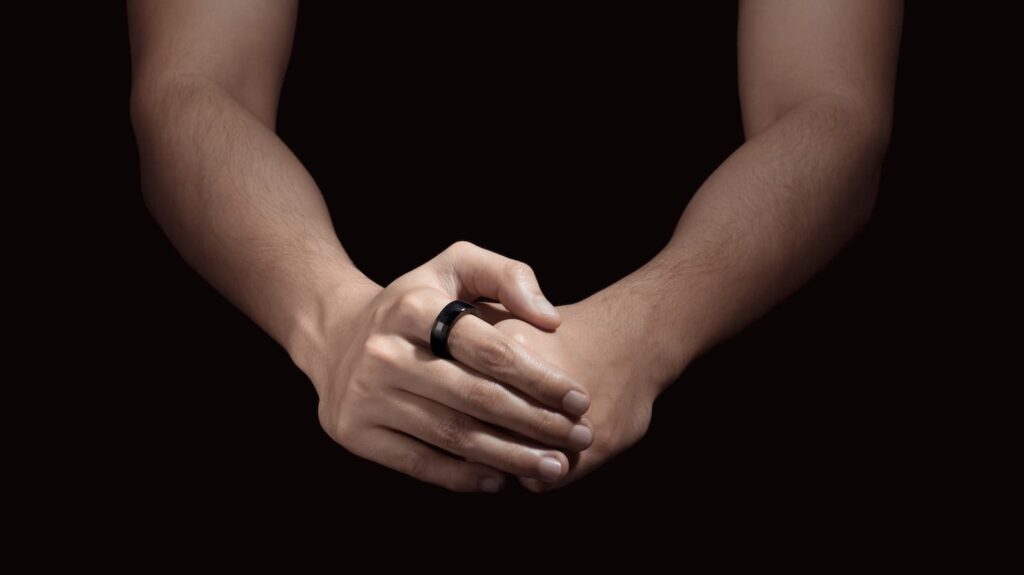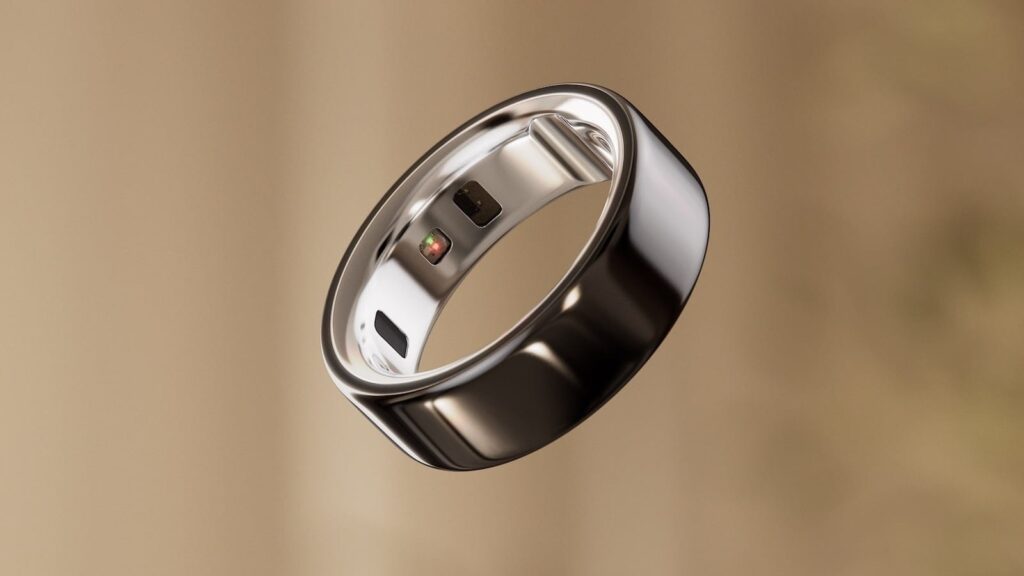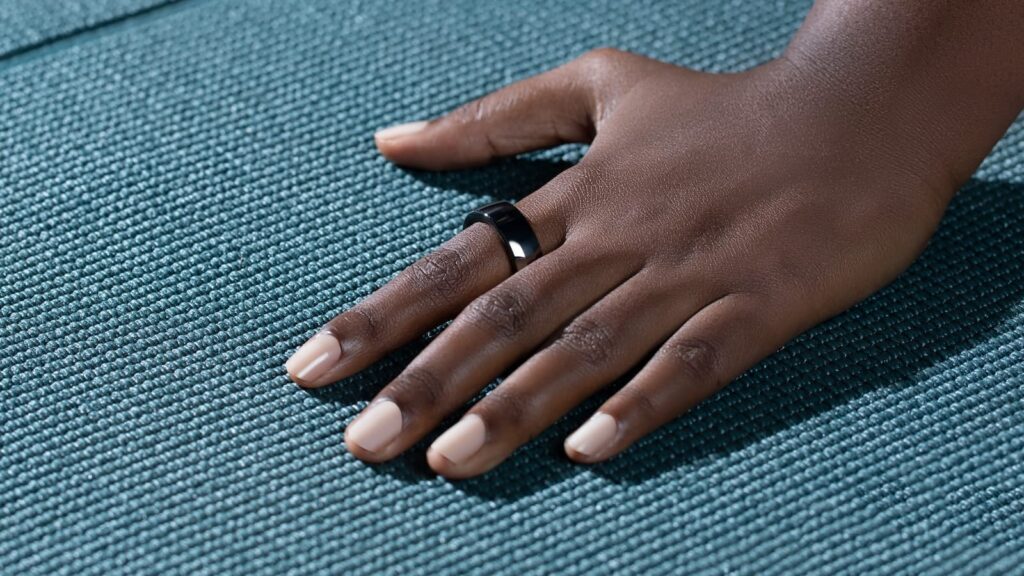Two of the biggest names in smart rings—Oura and Ultrahuman—are going head-to-head. I compared the Oura Ring 4 vs. Ultrahuman Ring Air to see which one actually delivers the best health tracking experience.
When it comes to smart rings in 2025, two names dominate the conversation: Oura and Ultrahuman. Oura dropped its fourth-gen ring in late 2024, while the Ultrahuman Ring Air has been on the scene since mid-2023 (and only just rolled out in some markets this year). They’ve both been called the “Apple Watches of smart rings” because they’re so sleek, sensor-packed, and serious about health data. But in the battle of the Oura Ring 4 vs. Ultrahuman Ring Air, which one’s actually worth your money—and your daily wear? I reviewed the specs, features, and user experiences to find out.
Related: What’s coming next in wearable and are we ready to wear them yet?
As a tech editor who’s reviewed thousands of gadgets over the past five years, I’m always thinking about the long game. Price matters, but so does how well a product fits into your lifestyle. Subscription or not, I recommend the one I believe most people will enjoy using—and stick with. But, I’ll tell you right now, one definitely helped me feel better.
So, here’s my take on Oura Ring 4 vs. Ultrahuman Ring Air.
Oura Ring 4 vs. Ultrahuman Ring Air: Price & Availability
As any tech editor can tell you, price is important. Products are made in price tiers to target all potential buyers, from billionaires to the average consumer. Let’s see how the Oura Ring 4 and the Ultrahuman Ring Air compare here. Are they really that different?
Without its membership fee, the Oura Ring 4 is currently the same price as the Ultrahuman Ring, $349. But the Ultrahuman Ring Air is a one-and-done deal. There are no extra fees for those awesome health features. The Oura Ring 4’s membership program is $5.99/month, or $69.99 annually. So, for one year of wear, the Oura Ring 4 will set you back a total of $408.99. If you wear the ring for another 3 years (what I would call average use), your total increases to $618.96—and that’s if Oura doesn’t increase its prices during that time (it probably will).
My Verdict: Ultrahuman Ring Air is the clear winner.
In terms of affordability, the Ultrahuman Ring Air reigns supreme. $349 is a steal compared to the approximate $619 you’ll spend on the Oura 4, for 4 years of use.
Oura Ring 4 vs. Ultrahuman Ring Air: Health and Fitness Tracking

No one spends $300+ on a smart ring just to wear it as tech jewelry. The real reason you want a smart ring is data—good, useful, obsess-over-it-daily data. So which smart ring, the Oura Ring 4 or Ultrahuman Ring Air, best helps you understand your health?
Both rings cover the basics well. You get continuous heart rate monitoring, skin temperature trends, blood oxygen levels, sleep stages, and menstrual cycle tracking. Whether you’re chasing better recovery or just want to know why you felt off this morning, either ring can point you in the right direction.
That said, Oura feels more polished and personalized in how it handles that data. It auto-detects workouts (and even separates overlapping activities, like a walk around the neighborhood followed by a HIIT session) and logs heart rate zones. The Oura app layout is clean, intuitive, and adapts to what’s happening with your body day by day. I also like that Oura integrates with Natural Cycles for more in-depth menstrual cycle tracking.
Ultrahuman, is more experimental—in a good way. It has a unique feature called the Stimulant Permissible Window that tells you when to stop drinking caffeine based on your circadian rhythm. The ring also dives into light exposure, metabolism, and glucose optimization (get even more insights when you pair it with the Ultrahuman M1 glucose tracker).
But here’s where Ultrahuman stumbles: the app experience can be confusing. While the data is there—and plentiful—the way it’s presented takes some getting used to. Some users love the science-y feel. Others (like me) would rather not spend 20 minutes Googling “Phase Response Curve” just to make sense of their morning dashboard.
Also, Oura lets you download your health data. This is super practical if you’re working with a coach or doctor. Ultrahuman doesn’t (yet), which feels a little old-fashioned in 2025.
My verdict: Oura Ring 4 wins this round.
The Ring 4’s not perfect—its step tracking still isn’t as reliable as a smartwatch’s—but Oura offers a more complete, user-friendly picture of your overall health. Ultrahuman has potential, especially for biohackers and data nerds, but it’s not quite as polished yet.
Oura Ring 4 vs. Ultrahuman Ring Air: Sleep Tracking

Another reason to buy a smart ring? Comfortable sleep tracking. Unlike a bulky smartwatch or fitness band, both the Oura Ring 4 and Ultrahuman Ring Air are both slim, fitting unobtrusively on your ring finger.
I found that both rings went beyond the basics, offering a full picture of sleep. Both track total time in bed, actual time asleep and sleep efficiency. Both even give you breakdowns of your REM, light, and deep sleep stages. You’ll also get your average heart rate and HRV (heart rate variability).
But here’s where the Oura Ring 4 pulls ahead for me: it makes the data approachable. The sleep score is clear, the graphs are understandable, and everything lives in its own dedicated tab. It doesn’t make me scroll through a cluttered homepage trying to figure out how I slept.
Ultrahuman takes a different approach. It gives you a Sleep Index and Recovery Score, both out of 100, so you can quickly see how things went—but once you try to dig deeper, the experience can feel dense. There’s a lot of info, which is great for data geeks, but I personally found it a bit confusing.
My Verdict: It’s a tie.
If you prefer an app that simplifies your data and helps you form better habits, Oura might feel more natural. But if you geek out over every detail, Ultrahuman has a ton to offer.
Oura Ring 4 vs. Ultrahuman Ring Air: Design

When it comes to design, both rings are minimalist. The sensors are tucked inside the bottom of the band, so they stay snug against your skin. Both Oura and Ultrahuman encourage users to wear them on thier index finger— for the best readings—though technically, any finger works.
Now let’s talk weight. Ultrahuman Ring Air is the lighter option, ranging from 2.4 to 3.6 grams, while the Oura Ring 4 weighs from 3.3 to 5.2 grams depending on the size. Does it make a huge difference? Probably not, but if you’re sensitive to jewelry on your fingers, the lighter Ultrahuman might be more comfortable long term.
Style-wise, Oura is clean and classic. The Ring 4 dropped the old Heritage/Horizon split and now comes in one smooth, uniform shape. There’s also a new Stealth finish. Meanwhile, Ultrahuman has been expanding its color palatte with hues like Aster Black, Bionic Gold, and Space Silver finishes—all of which look premium and modern.
I personally wish both brands offered a brushed metal option. According to user reviews, the rings are prone to scratches. Perhaps a foggier exterior could keep them looking fresher, longer?
My Verdict: It’s a draw.
Oura feels a bit more refined and thoughtfully updated, but Ultrahuman gets points for being lighter and equally durable. Both rings look great, fit well, and blend into daily life.
Oura Ring 4 vs. Ultrahuman Ring Air: Battery Life

A long battery life is important for wearable tech—and thankfully, both of these rings live up to expectations. Ultrahuman claims the Ring Air lasts up to six days on a single charge. But, many users report that they got more like four before they hit the battery warning zone. Not terrible, but definitely not the promise. Charging is simple—just drop it onto the little magnetic puck and it’ll hit 100% in about 90 minutes or less.
Oura, on the other hand, says the Ring 4 can stretch to eight days. Reviewers report six days, which is still better than Ultrahuman. And since I don’t want to think about battery life more than once or twice a week, Oura wins a few points here. Charging it is easy, too. Just place it on it base—the light glows white to let you know it’s working.
My Verdict: Oura Ring 4 wins this round.
The Oura Ring 4 lasts longer between charges, and that matters when you want to track your health all day, everyday. That said, both rings low-maintenance—neither will have you scrambling for a charger every night, which I appreciate.
Oura Ring 4 vs. Ultrahuman Ring Air: Verdict
Overall, the Oura Ring 4 comes out ahead. It lasts longer between charges, and offers a more user-friendly health experience. If you’re looking for a smart ring that’s easy to use yet offers in-depth insights—Oura is the one I’d recommend. Plus, for woman who want accurate period tracking, it’s the way to go.
That said, Ultrahuman Ring Air still deserves credit. It’s an ambitious, data-packed option that could be a fantastic fit for someone just getting started with smart rings and wants to explore all the health metrics out there. Plus, with no subscription fee, it offers long-term value for data-focused users.